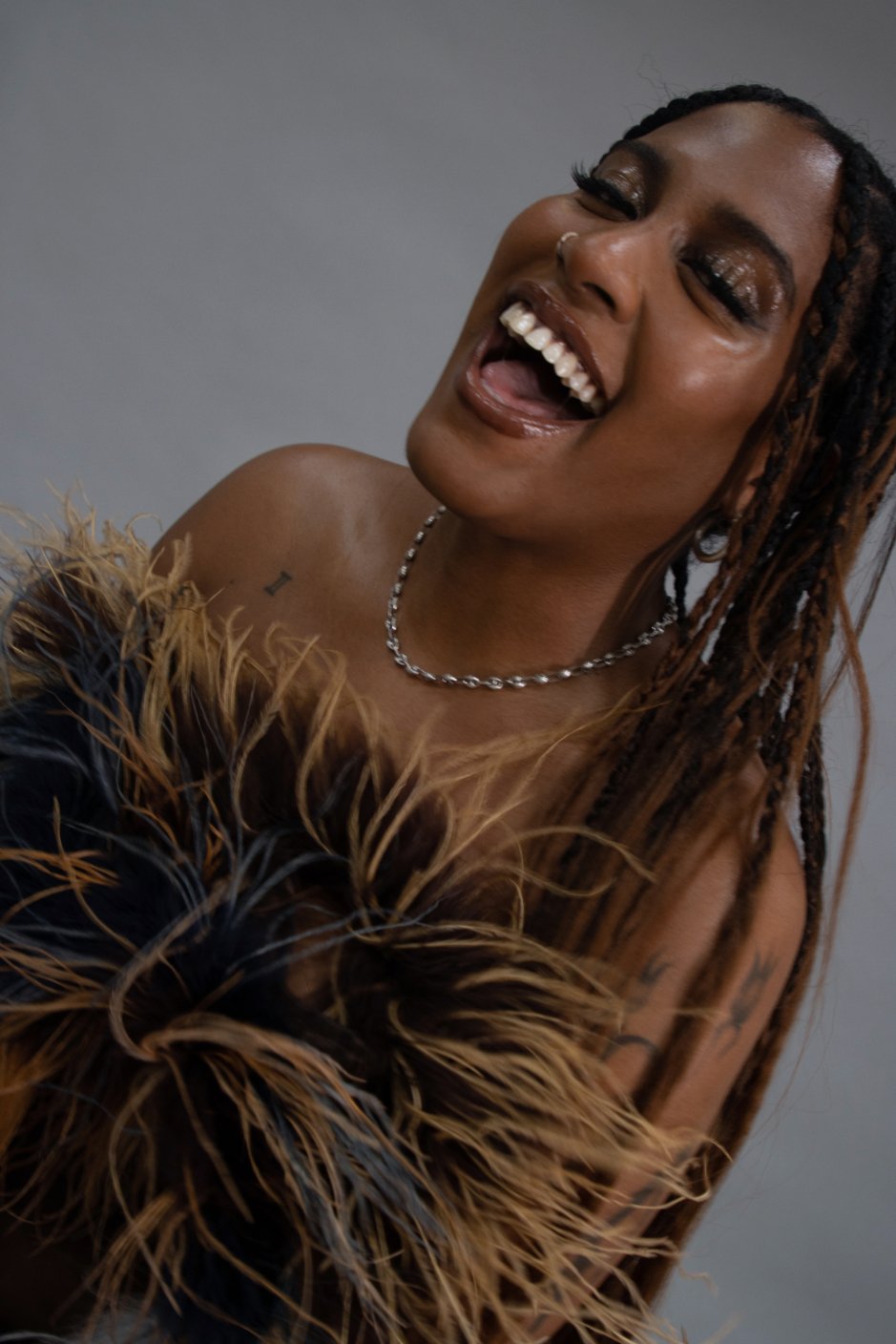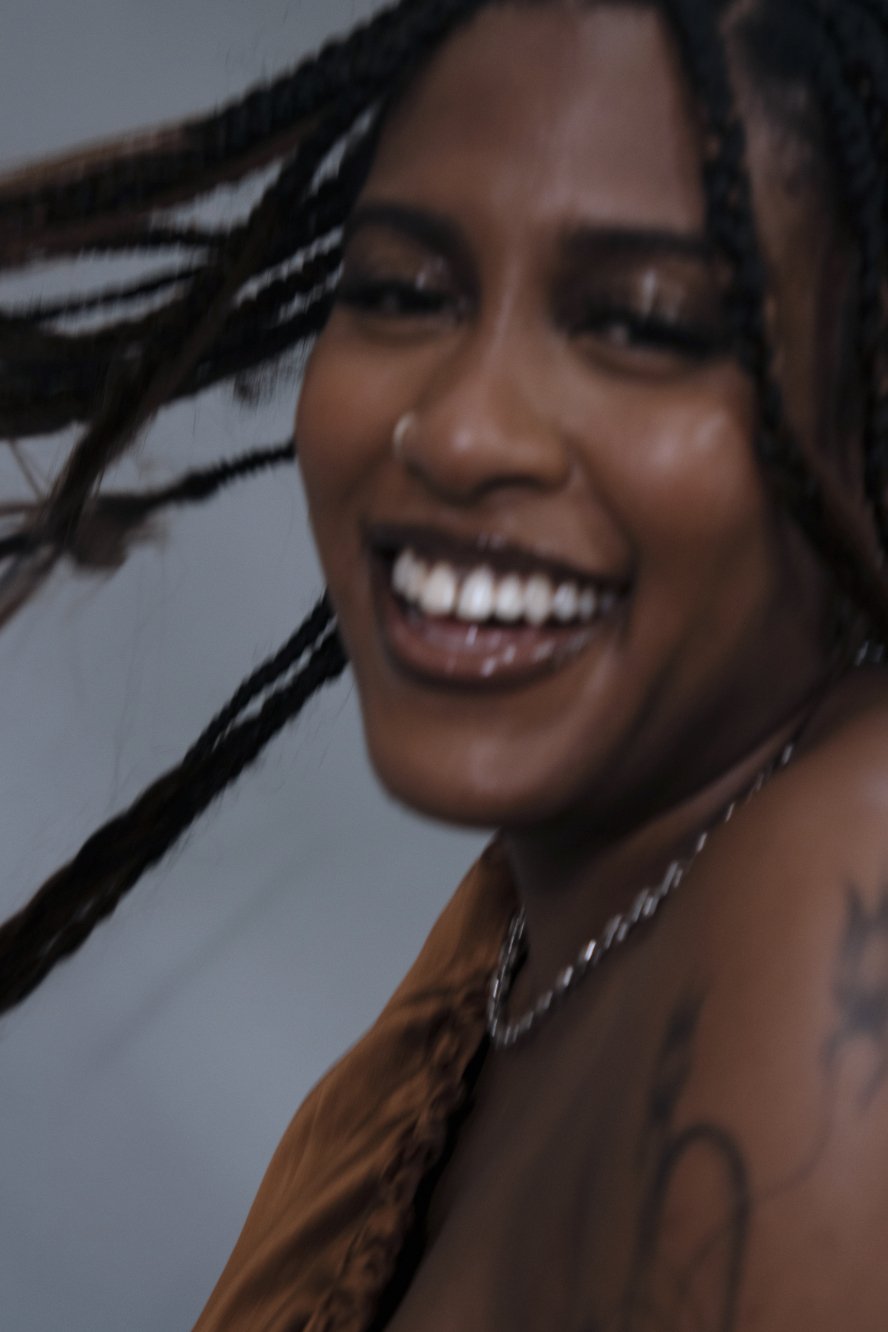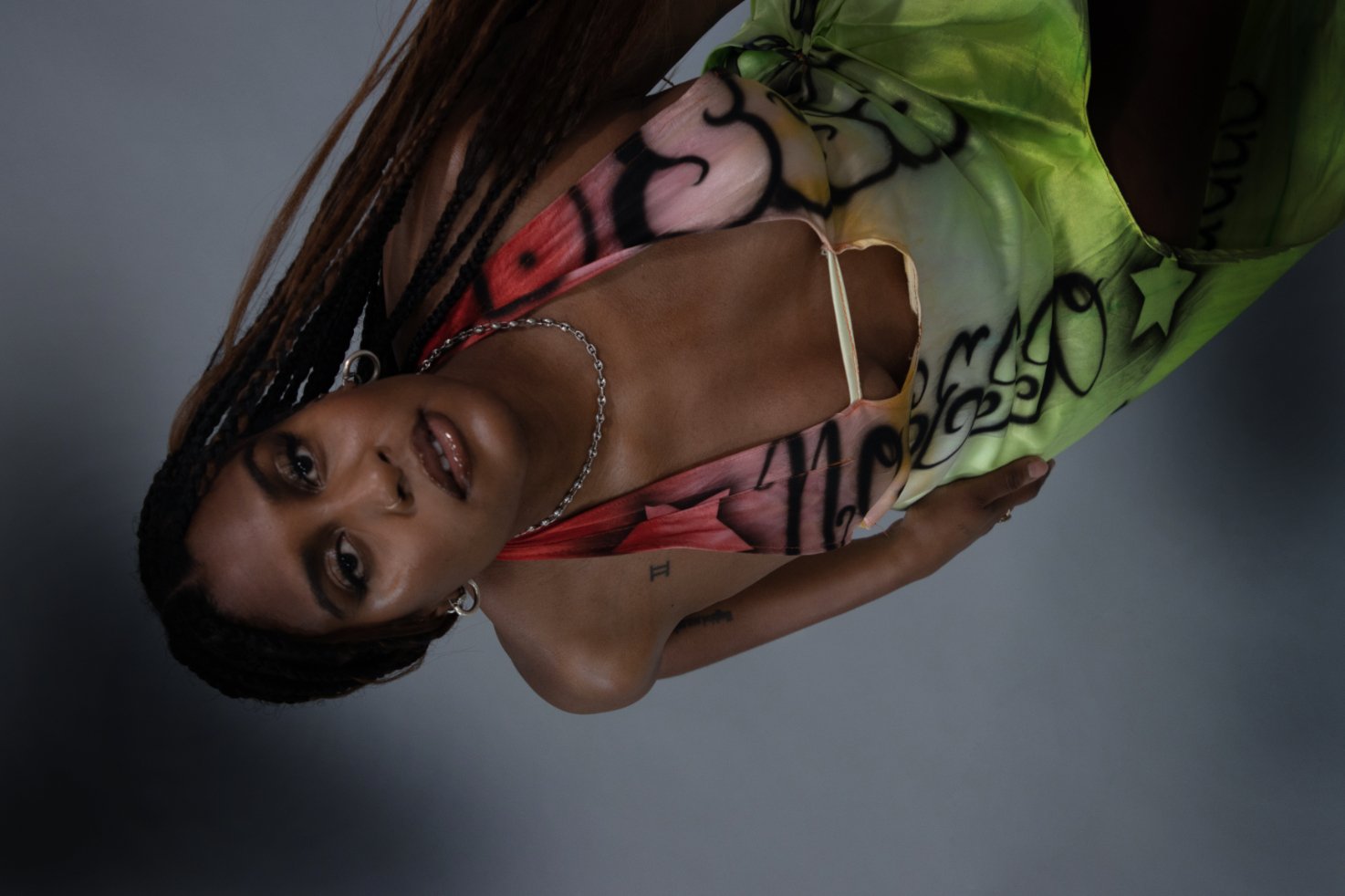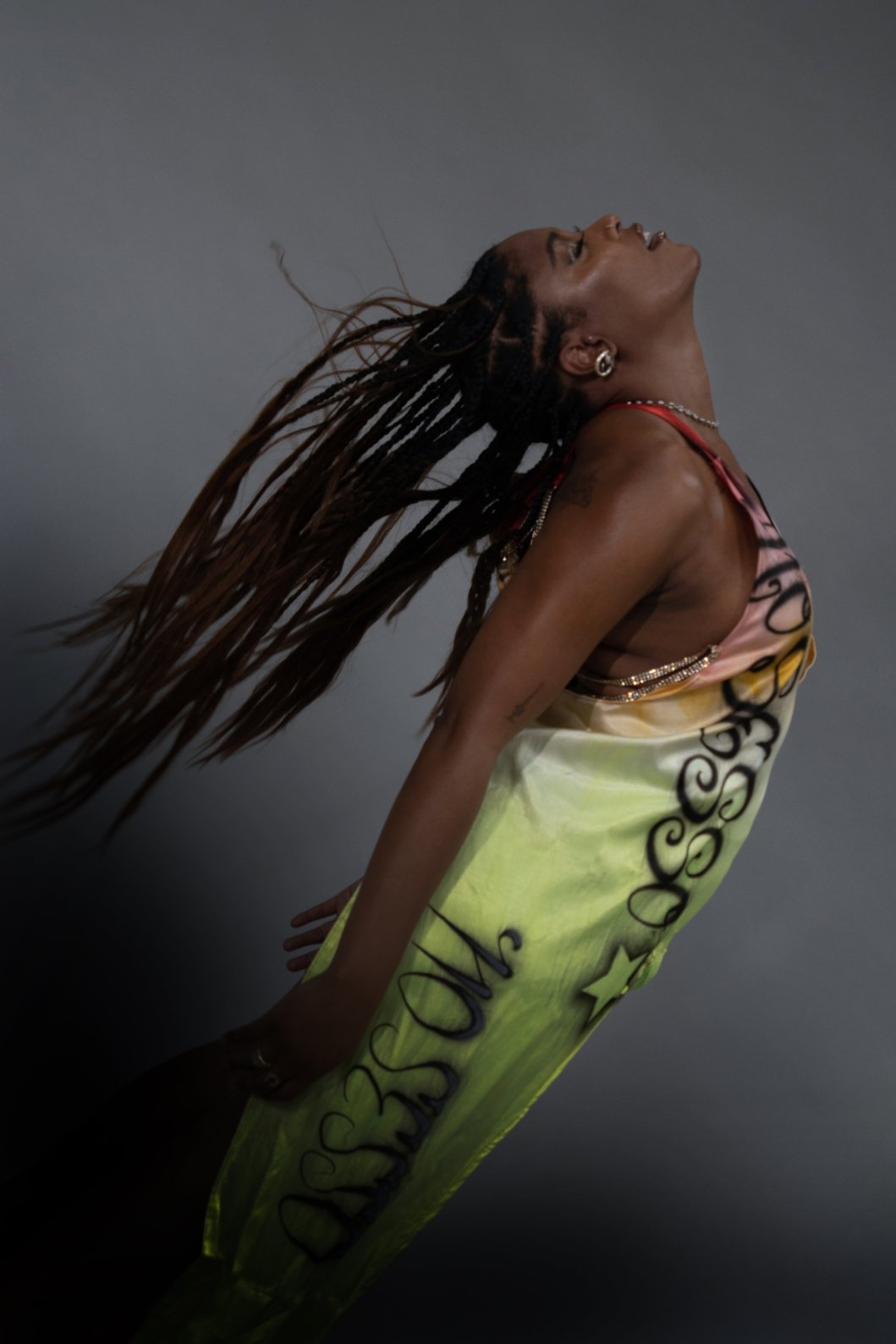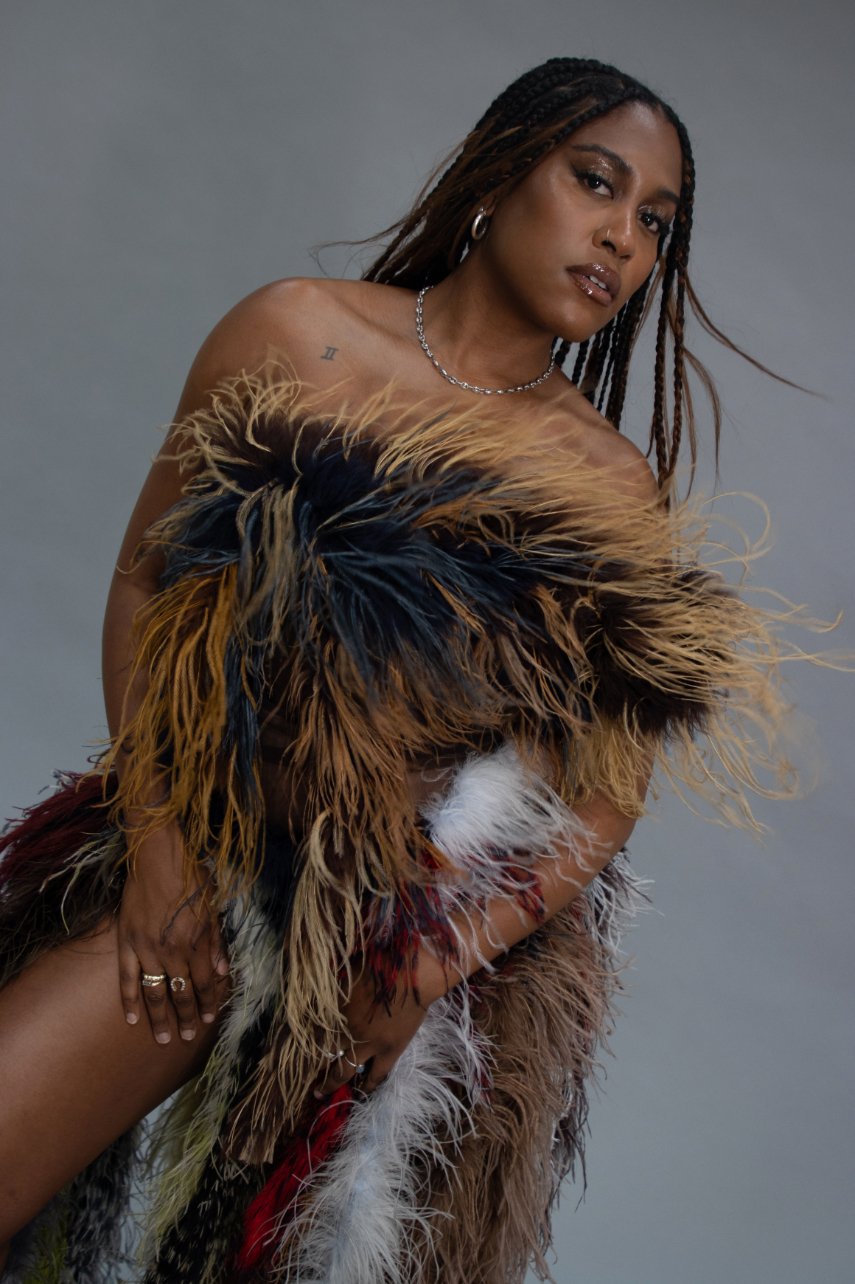interview by Chimera Mohammadi
Sanibonani is a Zulu greeting used to welcome or address a group. The word crawls up the wall of the Jonathan Carver Moore Gallery, the title of the current show featuring Zanele Muholi and various students from their art institute. In Jonathan Carver Moore’s SF Gallery, Sanibonani embodies pride: an unconditional, celebratory welcome. Self-portraits of Black, Queer, South African artists line the walls. Monochromatic San Francisco sun streams through the floor-to-ceiling windows that occupy one wall, matching the grays in the mostly black-and-white images, adding a cool cast to the large, bronze bust of Muholi. Moore’s Gallery is in the Tenderloin, a neighborhood in the world’s first Transgender District. The location makes sense: Moore has a clear passion for highlighting unheard voices and unseen perspectives, and since the gallery’s premier exhibition, The Weight of Souls, with artist Kacy Jung in March, his gallery has developed a reputation for doing just that. I sat down with Moore to talk about his experiences as the first Black, gay, man to own a gallery in the SF Bay Area, the intersection of marginalization and creativity, and the artists with whom he’s worked.
CHIMERA MOHAMMADI: Do you consider your space and your focus radical?
JONATHAN CARVER MOORE: I consider it radical in that there’s not someone operating from the same viewpoint as me. I love California, I love San Francisco, I love the art that you see on the walls of the galleries, institutions, museums, organizations, but what’s missing is someone like me, someone like the artists that are behind the scenes. These are often things that are curated and collected by someone who doesn’t necessarily share those exact similar experiences as you, but what about the people who work in those spaces? Shouldn’t they have a say in the story being told, and in the curation and the images that you see, the images that you would like to see? I just don’t see that. It’s radical in that I’m the only openly gay Black man who owns a gallery in the Bay Area. I think that’s radical.
Installation view, Sanibonani (2023)
Images courtesy of Jonathan Carver Moore Gallery
MOHAMMADI: How has your work and your gallery been received? Are you happy with the response it’s gotten?
MOORE: I’m very happy. Of course, you know, you always want more people to come and view the works, see the gallery and the space, and see what I focus on, but I am quite happy. I think that the grand opening of nearly 400 people showing up in March showing up to see Kacy Jung’s The Weight of Souls, that was Kacy’s debut solo exhibition. Kacy is born and raised in Taiwan, immigrated to the US to go to school for science, it was a PhD program, and completely pivoted to become an artist. So, to see people come out that evening for Kacy, was a delight, because it shows that we already have an arts community here, but then to have an arts community for an artist that people may not be as familiar with – granted, Kacy has had incredible residencies at Headlands, and is an artist in residence at Root Division, so people know her. But to see that amount of people show up for her first solo was amazing, so I think it’s been very well received. Anyone can resonate with The Weight of Souls because it’s really taking us on this journey of assimilation, wanting to be part of a culture that sometimes, pushes and pulls you in many different directions. For her, that was being a woman, an Asian woman, an Asian woman who is an immigrant studying science but really wanting to be in the art space, an Asian immigrant who’s going against her parents’ wishes because they wanted her to get her PhD. So, it was a show that anyone could walk into, because we’ve all been at some point in our lives in a situation where we had to assimilate, to change a little bit who we are.
MOHAMMADI: You’ve spoken before on the alienation of visiting museums and galleries and having to insert yourself mentally in the space. How would it have impacted you to visit the space you’ve created now when you were younger?
MOORE: That’s an emotional question, one I’ve definitely thought about. Even when I go into the gallery sometimes, and I see the space that I have, I think about how I never thought that that was a possibility. That’s so strange to say, because it’s not like I’m someone who’s been around during the Jim Crow era and segregation, but I think because being Black and gay together, I never saw someone like me in those spaces. Not just the art space, any space. I didn’t have anyone to look up to, to say, “Ok, that’s who I could be like when I grow up.” The first memory I have of seeing a gay man doing something positive was Will, on Will and Grace. And that’s sad. So that’s what I think about. What can I do for someone else? It doesn’t have to be in the art world, but this location was something really important to me. People are always talking about this neighborhood and who's out on the streets, but the reality is, this neighborhood has the biggest, most dense population of children, and that’s exactly why I wanted this to be here. The Tenderloin has the highest number of children and biggest immigrant population. I want people to walk by those big windows that I have to see that there’s a Black person who works there. And if you know me, you know that there’s a Black gay person who owns it, so there’s a way for someone to see themself in my story and this thing I’ve built.
MOHAMMADI: Your location in the Transgender District has been widely noted. Do you want to talk a bit more on bringing art to underserved communities?
MOORE: I would be silly to think that I’m part of a community that’s only focused on gay men or lesbians. We are a huge community, and not at all a monolith. Trans people in the Trans District, these are people and this district needs to be recognized with the history that exists here. Also, the Transgender District has been very supportive of me being a gallery here. When I wanted to open, they were the ones who gave me a grant to open a gallery in San Francisco, and to be in the Transgender District. The support of such a big organization means a lot to me. So, any way that I can support trans people and the non-profit and the neighborhood is what I’m going to do at any given time.
MOHAMMADI: bell hooks famously defined Queer as the self that “has to invent and create and find a place to speak and to thrive and to live”. Do you feel this intersection of Queerness and creativity in your works?
MOORE: How else would I be doing that without bell hooks? It is a space where we can speak and live and thrive, not just the community itself in the Transgender District, but my physical space in the gallery. It’s one where all are welcome to be whoever they are, whoever they want to be that day or whoever they feel they are the next day. I feel that all of that is necessary, and my space truly embodies that.
MOHAMMADI: Roger Wilkins said that the greatest power of White oppression is to define Black reality and to shape culture to reinforce that reality. With that in mind, do you want to speak on the importance of Black self-determination, especially with your current Muholi exhibition?
MOORE: I was at an event with Fredrika Newton [the wife of Black Panther leader Huey Newton] a few months ago, and one of the guest speakers said: “My Black entrepreneurship is not based on your white acceptance.” I feel like I’m reminded of that so often. It’s something that’s been beaten into all of us, that it’s only going to be successful if this person wants to acquire it, or if this person writes about it, or if this person says yes or go. The reality is, as much as I would love to take in everyone’s opinions, you’ve got to own and accept who you are yourself and be happy where you are in your life. Having this Muholi show, this show that cements and solidifies Black Queer existence in South Africa, and having it exist here in San Francisco, that is the exact opposite of someone being able to oppress us. Because no matter what, whether or not someone is acquiring those works, you now know those images you saw on those walls, and the bronze [bust of Muholi] in that Black-owned gallery, that lives in your mind and exists, which means it can’t be erased. Muholi has done such a good job at instilling that in me as a gallerist, as a friend, as a collector, and mentoring me. Don’t wait for anybody else to show you the way, to do it first, to give you the go ahead, you’ve got to be in charge of it yourself, and you’ve got to make sure that you’re making space for yourself, and not just taking up space, but claiming space. And that’s exactly what you see in 966 Market St. and for sure in that show.
Installation view, Sanibonani (2023)
Images courtesy of Jonathan Carver Moore Gallery
MOHAMMADI: What are you hopeful for in your future and the future of the gallery?
MOORE: I’m hopeful for a lot. (laughs) I’ve mentioned before that I care so much about community, and having the opportunity for so many people to be seen that may not have been seen. I’m looking forward to seeing that on a more global platform. Like, it’s great in San Francisco - I love San Francisco, SF has a great arts community, and we show up for each other, like has been done for the openings that I’ve had so far, but I want to see that on a global level.
Sanibonani is on view through August 4th at Jonathan Carver Moore Gallery, 966 Market St., San Francisco. Moore will also be organizing a special screening of Kokomo City at the Roxie Theater on August 4th.




